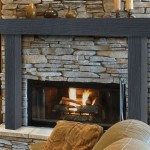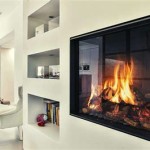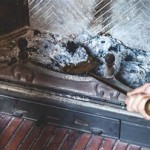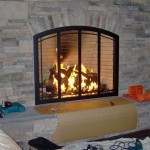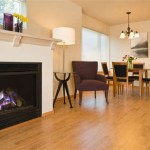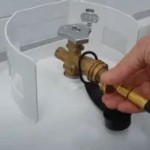Gas Fireplace Starters: A Comprehensive Guide
Gas fireplace starters represent a convenient and efficient method for initiating a wood-burning fire in a fireplace. Replacing traditional methods like newspaper and kindling, a gas fireplace starter provides a controlled flame that ignites wood quickly and reliably. This article will explore the different types of gas fireplace starters, their installation, operation, maintenance, safety considerations, and relevant regulations.
Types of Gas Fireplace Starters
Gas fireplace starters are available in several configurations, each with its own advantages and drawbacks. The primary types include permanent pipe starters, temporary pipe starters, and natural gas log lighters. Understanding the nuances of each type is crucial for selecting the most appropriate option for a specific fireplace and usage pattern.
Permanent Pipe Starters: These starters consist of a metal pipe, typically made of black iron or stainless steel, with strategically placed holes or slots. The pipe is permanently installed within the fireplace, usually beneath the grate where the wood is placed. When the gas is turned on, the escaping gas ignites, creating a series of flames that spread along the length of the pipe. This provides a concentrated heat source to quickly ignite the firewood.
The permanent nature of these starters offers convenience and consistency. They are typically connected directly to a gas supply line, either natural gas or propane, and controlled by a valve located outside the fireplace. This eliminates the need for manual placement of the starter each time a fire is desired.
However, permanent pipe starters require professional installation to ensure proper gas line connections and safe operation. The placement of the pipe and the design of the holes or slots are critical for optimal ignition and to prevent gas buildup, which can lead to dangerous explosions. Regular inspection of the pipe for corrosion or damage is also important to maintain safety and efficiency.
Temporary Pipe Starters: These starters function similarly to permanent pipe starters, utilizing a pipe with holes or slots to distribute gas and create a flame. The key difference lies in their portability and temporary nature. A temporary pipe starter is not permanently installed and can be moved or removed as needed.
This type of starter typically connects to a portable propane tank, making it suitable for situations where a permanent gas line is not available or desirable. They are often used in outdoor fire pits or fireplaces that are not used frequently. Users can easily connect the starter to the propane tank when needed and disconnect it for storage afterward.
While offering flexibility, temporary pipe starters require careful handling and storage. The propane tank must be stored safely away from heat sources and potential ignition points. Proper connection and leak testing are crucial before each use to prevent gas leaks and ensure safe operation. These starters also lack the convenience of a permanently installed system, as they require manual setup and connection each time.
Natural Gas Log Lighters: These starters are designed specifically for use with natural gas and are typically integrated into a decorative log set. Log lighters often incorporate a burner system that mimics the appearance of burning embers, providing both a functional starter and an aesthetic enhancement to the fireplace.
The installation of a natural gas log lighter is more complex than a simple pipe starter, as it involves connecting the burner system to a gas line and ensuring proper venting. Professional installation is highly recommended to ensure safe and efficient operation. The log set itself must be designed for use with a gas starter and comply with safety standards.
Log lighters offer the advantage of a visually appealing fire and the convenience of a natural gas connection. However, they may require more maintenance than simple pipe starters, as the burner system can become clogged with debris or soot over time. Regular cleaning and inspection are essential to maintain optimal performance and prevent safety hazards.
Installation and Operation
The installation and operation of a gas fireplace starter are crucial aspects of ensuring both safety and efficiency. Proper installation minimizes the risk of gas leaks and explosions, while correct operation ensures optimal ignition and minimizes gas consumption. Whether installing a permanent, temporary, or log lighter system, adhering to manufacturer instructions and local codes is paramount.
Installation Procedures: For permanent pipe starters and natural gas log lighters, professional installation is strongly advised. A qualified technician can ensure that the gas line connections are properly sealed and that the starter is positioned correctly within the fireplace. The technician will also verify that the venting system is adequate and complies with local building codes. This includes checking for any obstructions or damage that could impede the flow of exhaust gases.
Temporary pipe starters, while seemingly simpler to install, still require careful attention to detail. The connection to the propane tank must be secure and leak-free. A leak test, using soapy water applied to the connections, is essential before each use. Any signs of gas bubbles indicate a leak that must be addressed immediately before attempting to light the starter.
Operational Guidelines: Before igniting a gas fireplace starter, it's crucial to ensure adequate ventilation. Open the fireplace damper completely to allow for proper airflow and prevent the buildup of carbon monoxide. Clear the area around the fireplace of any flammable materials, such as curtains, rugs, or furniture. Do not use excessive amounts of paper or kindling to supplement the gas starter, as this can create excessive smoke and potentially damage the fireplace.
To ignite the starter, turn on the gas valve and use a long-handled lighter or match to ignite the gas escaping from the pipe or burner. Once the wood is ignited, gradually reduce the gas flow to maintain a steady flame. Do not leave the gas starter running for an extended period after the wood is burning vigorously, as this is wasteful and can create excessive heat within the fireplace. Most starters are designed for initial ignition and shouldn't be used as a primary fuel source.
Troubleshooting: Common issues with gas fireplace starters include difficulty igniting, uneven flame distribution, and gas leaks. Difficulty igniting may be caused by a clogged burner, low gas pressure, or a faulty igniter. Uneven flame distribution can result from blocked holes or slots in the pipe. Gas leaks are potentially dangerous and require immediate attention. If a gas leak is suspected, turn off the gas supply immediately and contact a qualified technician to inspect and repair the system.
Maintenance and Safety
Regular maintenance and adherence to safety guidelines are essential for ensuring the long-term performance and safety of a gas fireplace starter. Ignoring maintenance can lead to decreased efficiency, increased risk of gas leaks, and potential fire hazards. Proper safety practices minimize the risk of accidents and ensure a safe and enjoyable fireplace experience.
Maintenance Procedures: The frequency and type of maintenance required depend on the type of gas fireplace starter and the frequency of use. Permanent pipe starters and natural gas log lighters should be inspected annually by a qualified technician. The technician will check for gas leaks, corrosion, and damage to the burner system. The venting system should also be inspected to ensure proper airflow.
Temporary pipe starters require more frequent inspection due to their portability and exposure to the elements. Check the propane tank and connections for leaks before each use. Clean the burner regularly to remove any debris or soot that could impede gas flow. Store the starter and propane tank in a safe and dry location when not in use.
Safety Precautions: Never leave a gas fireplace starter unattended while it is in operation. Keep children and pets away from the fireplace while the starter is lit. Install a carbon monoxide detector in the vicinity of the fireplace to provide early warning of any gas leaks or incomplete combustion. Ensure the fireplace is properly vented before each use and never block the vents.
If you smell gas, turn off the gas supply immediately and evacuate the area. Do not use any electrical devices or open flames until the gas has dissipated. Contact a qualified technician or the gas company to inspect and repair the system before resuming use.
Regulations and Codes: Gas fireplace starters are subject to various safety regulations and building codes. These regulations are designed to ensure the safe installation and operation of gas-burning appliances. Consult with your local building department or a qualified technician to determine the specific regulations that apply to your area. Compliance with these regulations is essential to prevent accidents and avoid legal liability.
Emergency Procedures: In the event of a fire, evacuate the area immediately and call emergency services. Do not attempt to extinguish the fire yourself unless it is small and contained. Keep a fire extinguisher readily available and know how to use it properly. Familiarize yourself with your local emergency procedures and have a plan in place in case of a fire.

Gas Fireplace Starters Log Lighter Universal

How To Install A Log Lighter Fireplace Gas Starter Pipe

Gas Fireplace Starters In Chicago Capital Chimney Corp

Simple Tips For Fall Fires With A Wood Burning Gas Fireplace Or Starter Hometown Plumbing North Atlanta Plumber

Using A Gas Fireplace During Power Outage Answered Tips

Gas Fireplace Starters In Chicago Capital Chimney Corp

How To Light A Gas Fireplace
Is A Gas Log Lighter Dangerous

Why You Can T Burn Wood In A Gas Fireplace But Starter

Gas Starters In Fireplaces And Safety Hunker
Related Posts

